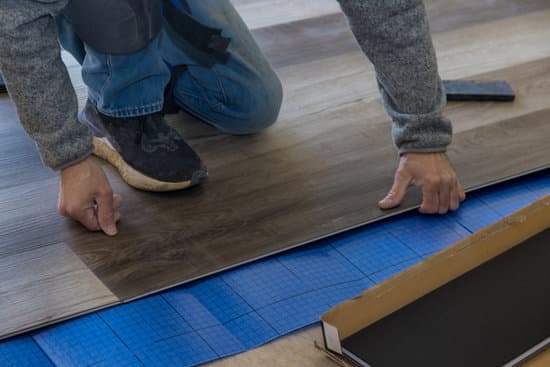Are you struggling with poor phone reception at home? In this article, we will discuss how to improve phone reception at home and ensure consistent connectivity for all your communication needs. Whether you’re making important business calls or simply trying to stay in touch with friends and family, having reliable phone reception is essential. We will explore the factors that contribute to poor phone reception indoors and provide practical solutions for enhancing your signal strength.
Having good phone reception at home is crucial for staying connected in today’s digital world. It ensures seamless communication, allows for instant access to information, and provides peace of mind during emergencies. However, many people experience frustration due to dropped calls and slow data speeds within their own homes. Understanding the reasons behind poor phone reception is the first step towards finding effective solutions.
In this article, we’ll delve into the various factors that can contribute to poor phone reception at home, including building materials, geographical location, and network coverage. We will also provide actionable tips for assessing your current situation and improving your phone reception without needing external help. By the end of this article, you’ll have a comprehensive understanding of how to tackle the issue of poor phone reception and enjoy consistent connectivity in your own home.
Identifying the Root Cause
Poor phone reception indoors can be a source of frustration for many people, especially as we rely on our mobile devices for communication, work, and entertainment. Understanding the factors that contribute to poor phone reception can help in finding effective solutions to improve it. One common factor is the distance from the nearest cell tower.
The farther away you are from a cell tower, the weaker the signal will be. In addition, building materials can also affect phone reception. Materials such as metal, concrete, and wire mesh can block or weaken cellular signals, leading to poor reception indoors.
Another factor that affects phone reception indoors is electronic interference. This can come from household appliances, Wi-Fi routers, and even other electronic devices such as baby monitors. These sources of interference can disrupt cellular signals and degrade phone reception. Additionally, weather conditions like heavy rain or snowfall can also impact phone reception as these elements can interfere with radio waves.
To improve phone reception at home, it’s important to identify these root causes of poor signal strength and take steps to address them. By understanding how these factors affect phone reception, you can make informed decisions about which solutions will be most effective in improving the quality of your cellular connection at home.
Choosing the Right Provider
When it comes to improving phone reception at home, one of the first and most important steps is choosing the right mobile network provider. Different providers have varying levels of network coverage and signal strength, and these factors can significantly impact your ability to make and receive calls, send text messages, and access data on your mobile device.
Here are some key considerations when comparing network coverage and signal strength:
1. Coverage Maps: Before selecting a mobile network provider, it’s essential to review their coverage maps. These maps provide an overview of the areas where the provider offers service, including 4G LTE coverage, 3G service, and voice call coverage. Be sure to check the coverage in the specific location of your home to ensure that you will have reliable service indoors.
2. Signal Strength: In addition to coverage maps, consider the signal strength in your area. Signal strength can be impacted by various factors such as distance from cell towers, obstructions like buildings or trees, and even local geography. Some providers offer tools or apps that allow you to check the signal strength in your area before making a decision.
3. Customer Reviews: Researching customer reviews and experiences with different mobile network providers can also provide valuable insights into the quality of their service. Look for feedback specifically related to indoor reception, as this will give you a better idea of how each provider performs in home environments.
By carefully comparing network coverage and signal strength among different providers, you can make an informed decision that will ultimately improve phone reception at home and enhance your overall communication experience.
Assessing Your Home
When it comes to ensuring good phone reception at home, it’s crucial to first identify any dead spots or areas with poor reception. This step is essential for understanding where the problem lies and for finding effective solutions to improve phone reception throughout your home. Here are some tips on how to assess your home and identify areas with poor phone reception:
- Take note of where you experience dropped calls or poor call quality
- Walk around your home and pay attention to signal strength bars on your phone
- Use a signal strength app to measure the strength of the cellular signal in different parts of your home
- Identify any specific rooms or areas where you consistently have trouble with phone reception
Once you’ve identified the dead spots and areas with poor reception in your home, you can then begin exploring potential solutions to improve phone reception in those specific locations. This could involve implementing DIY solutions, using a signal booster, or considering external options such as antennas or amplifiers.
By carefully assessing your home and pinpointing the areas with poor phone reception, you can take targeted steps to improve the overall connectivity within your living space. Whether it’s in the basement, the attic, or certain rooms on a specific floor, understanding where the problem lies is the first step towards finding an effective solution for better phone reception at home.
DIY Solutions
Improving phone reception at home is essential for clear communication and seamless connectivity. If you’re experiencing poor phone reception indoors, there are a few DIY solutions that you can try before seeking external help. Here are some tips and tricks for improving phone reception at home without the need for professional assistance.
Firstly, one of the simplest ways to improve phone reception at home is to find the best location in your house to make and receive calls. Try moving closer to a window or going outside if possible as this can often result in better signal strength. Additionally, avoid obstructing your phone with physical barriers such as walls or large objects, as these can interfere with the signal.
Another DIY solution involves resetting your network settings or updating your device’s software. Sometimes, poor phone reception can be attributed to outdated software or incorrect network settings, so performing these simple tasks can potentially improve your signal strength.
Lastly, consider using Wi-Fi calling if it’s available through your service provider. Wi-Fi calling allows you to make calls and send texts over a Wi-Fi network instead of relying solely on cellular coverage. This can be particularly useful in areas with poor cell reception but strong Wi-Fi signals.
To sum up, implementing these DIY solutions could significantly improve phone reception at home before considering more advanced options. By optimizing your surroundings and utilizing alternative methods of communication, you may notice an improvement in signal strength and call quality without having to rely on external assistance right away.
| DIY Solutions | Tips & Tricks |
|---|---|
| Find the best location for calls | Moving closer to windows or going outside |
| Reset network settings/update software | Outdated software or incorrect settings may affect signal strength |
| Use Wi-Fi calling | Makes use of strong Wi-Fi signals for communication |
Using Signal Boosters
When it comes to improving phone reception at home, using a signal booster can be an effective solution. Signal boosters work by amplifying the existing cell signal, providing better coverage and stronger reception throughout your home. But before purchasing and installing a signal booster, there are several factors to consider to ensure that you are selecting the right one for your specific needs.
First and foremost, it’s important to determine the frequency bands supported by your carrier in order to select a compatible signal booster. Different carriers operate on different frequencies, so choosing a signal booster that supports the appropriate frequencies is crucial for optimal performance. Additionally, considering the size of your home and the layout of the areas with poor reception will help you determine the strength and range needed for the signal booster.
After selecting a suitable signal booster, installation is the next step. Most signal boosters come with easy-to-follow instructions for installation, but it’s essential to place the external antenna in a location where it can receive a good existing cell signal. The internal antenna should be placed in an area where improved reception is needed most. Proper installation is key to maximizing the effectiveness of the signal booster.
| Factor | Consideration |
|---|---|
| Carrier Frequency Bands | Determine which bands your carrier operates on |
| Home Size and Layout | Consider the square footage of your home and areas with poor reception |
| Installation | Properly place external and internal antennas for optimal performance |
External Solutions
Using Antennas
When considering professional options for improving phone reception at home, one effective solution is to install an external antenna. An outdoor antenna can be mounted on the roof of your home or in an elevated position to capture a stronger signal from the nearest cell tower.
The signal is then transmitted through a cable into your home, providing improved reception for your mobile devices. It’s important to consult with a professional installer to determine the best type of antenna for your specific location and network provider.
Amplifying Signals
Another option for enhancing phone reception at home is to use a signal amplifier, also known as a repeater or booster. These devices work by capturing the existing cellular signal outside of your home, amplifying it, and then rebroadcasting it inside.
Signal amplifiers are beneficial for addressing weak reception caused by obstructions or long distances between your location and the nearest cell tower. However, it’s crucial to follow local regulations and obtain the necessary permits for installing signal amplifiers in order to comply with legal requirements.
Professional Installation Services
For those seeking a more comprehensive solution, enlisting the help of professional installation services may be the most effective way to improve phone reception at home. Companies specializing in telecommunications and signal optimization can conduct an on-site assessment of your property to identify areas with poor reception and develop a tailored plan for addressing these issues.
Whether it involves installing antennas, amplifiers, or other equipment, expert professionals can ensure that you receive reliable and consistent phone reception throughout your home.
By exploring these external solutions and seeking out professional options such as antennas and amplifiers, homeowners can significantly improve their phone reception at home. These methods provide an effective way to enhance connectivity and communication within your household.
Maintenance and Ongoing Improvement
Regularly Check and Update Phone Settings
One simple yet overlooked way to ensure consistent and reliable phone reception at home is by regularly checking and updating your phone settings. This includes ensuring that your device’s software is up-to-date, as updates often include improvements to network connectivity and signal strength. Additionally, checking and adjusting your network settings, such as turning on Wi-Fi calling or switching to a different network mode, can also help improve reception.
Keep Your Home Environment in Mind
The layout and construction of your home can significantly impact phone reception. For ongoing improvement, consider making changes to your home environment that could potentially enhance phone reception. For example, rearranging furniture or moving obstructions that may block signal transmission can make a noticeable difference. Additionally, using materials like reflective window film or signal-boosting paint can help amplify the signals within your home.
Regularly Perform Signal Strength Tests
To ensure consistent and reliable phone reception at home, it’s essential to regularly perform signal strength tests throughout different areas of your home. By identifying any persistently weak spots, you can take proactive measures to address these issues. There are numerous free apps available that allow you to check the strength of cellular signals in various locations around your home. These tests can help you pinpoint dead zones and prioritize improvement efforts.
As technology continues to evolve, so do methods for improving phone reception at home. By staying informed about the latest developments in signal-boosting technology and consistently implementing best practices for maintenance and enhancement, you can create an environment with reliable phone reception for seamless communication and connectivity.
Conclusion
In conclusion, improving phone reception at home is essential for maintaining effective communication and connectivity. The ability to make and receive calls, send text messages, and access data services relies heavily on a strong and reliable signal. By understanding the factors that affect phone reception indoors and taking the necessary steps to address them, individuals can ensure that they are not hindered by poor signal strength in their own homes.
It is important to identify the root cause of poor phone reception, whether it be due to geographical factors, building materials, or network coverage. Choosing the right provider with strong network coverage and signal strength can make a significant difference in improving phone reception at home. Additionally, assessing the layout of your home to identify dead spots and areas with poor reception is crucial in implementing targeted solutions for improvement.
DIY solutions such as repositioning your router, using Wi-Fi calling, or installing a femtocell can help improve phone reception at home without external help. In more severe cases, signal boosters or professional options like antennas and amplifiers may be necessary for ensuring consistent and reliable phone reception. Ultimately, with regular maintenance and ongoing improvement efforts, individuals can enjoy better connectivity through improved phone reception at home.
Frequently Asked Questions
How Can I Boost My Cell Phone Signal at Home?
Boosting your cell phone signal at home can be done by using a signal booster or repeater, which amplifies the existing signal. You can also try adjusting the location of your router and keeping it away from other electronic devices.
How Can I Improve My Cell Phone Signal Strength?
Improving your cell phone signal strength can be achieved by ensuring that your phone’s software is up to date, as well as clearing the cache and resetting network settings. Using Wi-Fi calling or enabling airplane mode for a few seconds can also help.
Do Homemade Cell Phone Signal Boosters Really Work?
Homemade cell phone signal boosters may not always be reliable or effective. While some DIY methods use materials like aluminum foil or a soda can, their actual impact on boosting signal strength is questionable. It’s often better to invest in a commercial signal booster for more reliable results.

I’m thrilled to have you here as a part of the Remodeling Top community. This is where my journey as an architect and remodeling enthusiast intersects with your passion for transforming houses into dream homes.





